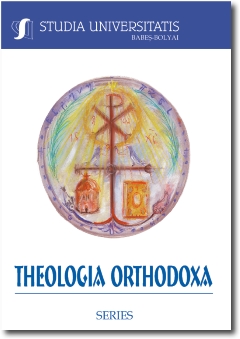RĂSTIGNIREA DIN BISERICA MITROPOLITANĂ DIN AMFISA PICTATĂ DE SPIROS PAPALOUKAS
CRUCIFIXION IN THE PAINTINGS OF SPIROS PAPALOUKAS
Author(s): Marcel Gh. MunteanSubject(s): Christian Theology and Religion
Published by: Studia Universitatis Babes-Bolyai
Keywords: supreme suffering; passion; cross; death; resurrection; icons; symmetrical composition; the Virgin Mary; Jesus; John the Theologian.
Summary/Abstract: Crucifixion in the Paintings of Spiros Papaloukas. Deeply influenced by French post-impressionist painting, Spyros Papaloukas (1892-1957), artist known for his various themes and techniques, will focus his artistic searches on religious art, mostly postbyzantine. His studies that he has conceived in the ambiance of the wall paintings from Mount Athos and also those he will later paint in Meteora, Osios Loukas will become an inspiration in his compositions. In order to create the Crucifixion of Amfisa Metropolitan Church, the painter will accomplish more studies, including the one at Osios Loukas fig. 1, the most expressive one. This particular composition has profound similarities with the icon that has the same name and can be found in a collection at the Museum of Athens, fig.3, alongside with the presence of three historical figures Virgin Mary, Christ crucified and St. John, the background decorated with stars, the attitudes of the characters. The presence of angels in the icon is doubled up with the two stars that Papaloukas introduces in his painting, influenced by text of the Holy Evangelists Marcus. 15.33, Lukas. 23.44 45. The crown of thorns on Jesus’s head, frequently used as an enhancement of the suffering by the Western painters, can also be seen in the works of the Greek masters from the nineteenth century, painters who worked in the area of Crete, Rhodes or Eptanisou. Chromatic contrast of hot and cold, structured in orange blue, red green, gives a touch of individuality and freedom to his painting, even if the whole scene remains anchored in the tradition of post-Byzantine painting. The novelty and originality of the greek painter of the Crucifixion assures us that the artist is not copying a popular theme, he is dealing with the theme by creating the illusion of motion for the viewer, giving an individuality to his paintings, as much as he was allowed according to the rules of the byzantine style.
Journal: Studia Universitatis Babes-Bolyai - Theologia Orthodoxa
- Issue Year: LIV/2009
- Issue No: 2
- Page Range: 141-146
- Page Count: 6
- Language: Greek, Modern (1453-)

